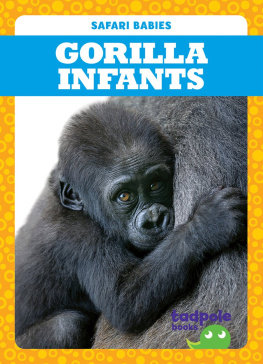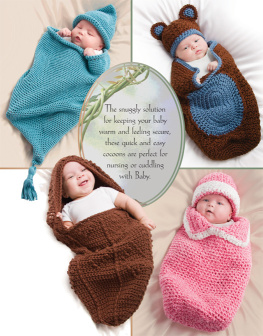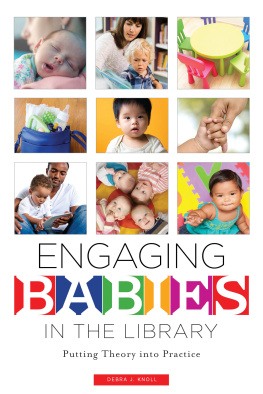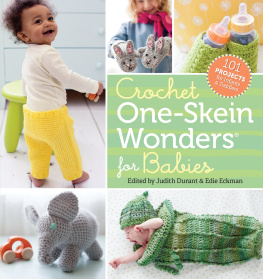Focus on Babies:
How-tos and What-to-dos when Caring
for Infants
by Jennifer Karnopp
Illustrations by Deb Johnson
Gryphon House, Inc.
Lewisville, NC
Copyright 2012 Jennifer Karnopp
Published by Gryphon House, Inc.
PO Box 10, Lewisville, NC 27023
800-638-0928; 877-638-7576 (fax)
Visit us on the web at www.gryphonhouse.com.
All rights reserved. No part of this publication may be reproduced or transmitted in any form or by any means, electronic or technical, including photocopy, recording, or any information storage or retrieval system, without prior written permission of the publisher.
Cover photograph courtesy of iStockphoto.
Illustrations by Deb Johnson.
Photographs courtesy of iStockphoto.
Library of Congress Cataloging-in-Publication Data
Karnopp, Jennifer.
Focus on babies : how-tos and what-to-dos when caring for infants / by Jennifer Karnopp ; illustrations by Deb Johnson.
p. cm.
Includes index.
ISBN 978-0-87659-425-4
1. Child care. 2. Infants--Care. 3. Early childhood education. 4. Child care services. I. Title.
HQ778.5.K373 2012
649.1--dc23
2012004435
Bulk Purchase
Gryphon House books are available for special premiums and sales promotions as well as for fund-raising use. Special editions or book excerpts also can be created to specifications. For details, contact the Director of Marketing at Gryphon House.
Disclaimer
Gryphon House, Inc. cannot be held responsible for damage, mishap, or injury incurred during the use of or because of activities in this book. Appropriate and reasonable caution and adult supervision of children involved in activities and corresponding to the age and capability of each child involved is recommended at all times. Do not leave children unattended at any time. Observe safety and caution at all times.
Contents
A quality learning environment is important for the healthy development of all young children, even infants. But the elements of a quality environment are not the same for every age. What works for preschoolers does not always work with toddlers, and what might be appropriate for toddlers is not necessarily the best arrangement for infants. In this book you will find information and ideas to help you create a quality early learning program specifically for the infants in your care. While safety is always an important concern of any program, safety issues, rules, and regulations are not the focus of this book. Instead, we will take a look at the many elements that make up a quality program. We will explore ideas for your physical space, your daily routines, your relationships and interactions with babies and their families, and the experiences you create. After reading this book, you will be able to create a center-based program perfectly suited to meet the unique needs of infants and their families, and suited to you, the caregiver, as well.
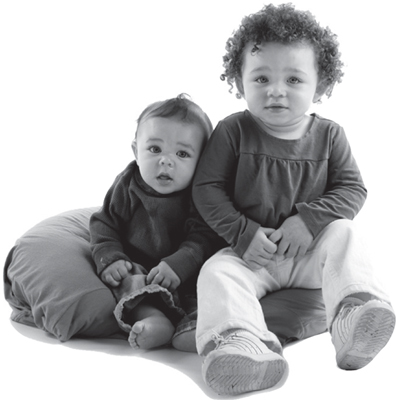
As a caregiver, you may feel pressured to teach infants or focus on their brain development. Without a doubt, infants will benefit from a program that meets their developmental needs, but keep in mind that their needs are unique. Resist the temptation to model your program after a preschool classroom. Infants are not tiny preschoolers, and thinking of them as such just is not developmentally appropriate.
Infants muscles, senses, and brains are all developing rapidly. They spend their days just trying to make sense of their own bodies and the world around them. From the moment that they are born, babies are constantly making new discoveries and problem solving. This takes all of their energy and focus. To help support infants as they grow and develop, we need to know them as individuals, to understand where they are developmentally, and to encourage their explorations.
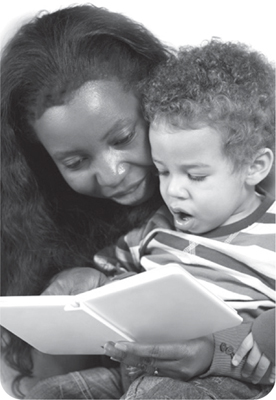
Creating a developmentally appropriate environment for infants means that you support them as they practice and perfect discoveries that they have already made (the skills they have at their current level of development) and then encourage them to problem-solve and try new things (to push themselves toward the next level of development). In other words, developmentally appropriate practice is the art of encouraging children to perfect old skills and explore new ones without getting bored or being frustrated.
To help you create a developmentally appropriate infant program, we will first explore your role as the caregiver. We will take a look at the elements that make up a good infant environment, including how to set up your space and how to plan and evaluate your program. We will explore all that goes into a child-centered daily routine and give you information on infant growth and development. You will also find some basic information on working with children who have special needs.
A young child develops and grows as a whole child, meaning that all areas of development are interconnected. As a baby learns to grasp objects and bang, shake or mouth those objects, she is developing motor skills. When she hears her caregiver name the object that she grabs, she is developing language skills. When she smiles at her caregiver as she shakes the object and receives a smile in return, her caregiver is encouraging social skills and emotional development. The baby then takes in all of these experiences and information to develop a better understanding of the object. It is soft and easy to grab. It is safe to grab. There is a word that describes the object, and when I explore the object, my caregiver smiles at me. Improved abilities in one area of development enable a child to further explore another area. And when a child can better explore the world, she can better understand the world. For this reason, the rest of this book is devoted to activities that will help you meet the needs of infants in all areas of their development. Here, the words activity and experience are used interchangeably to mean a planned, open-ended experience. The activities are divided into four sections.


